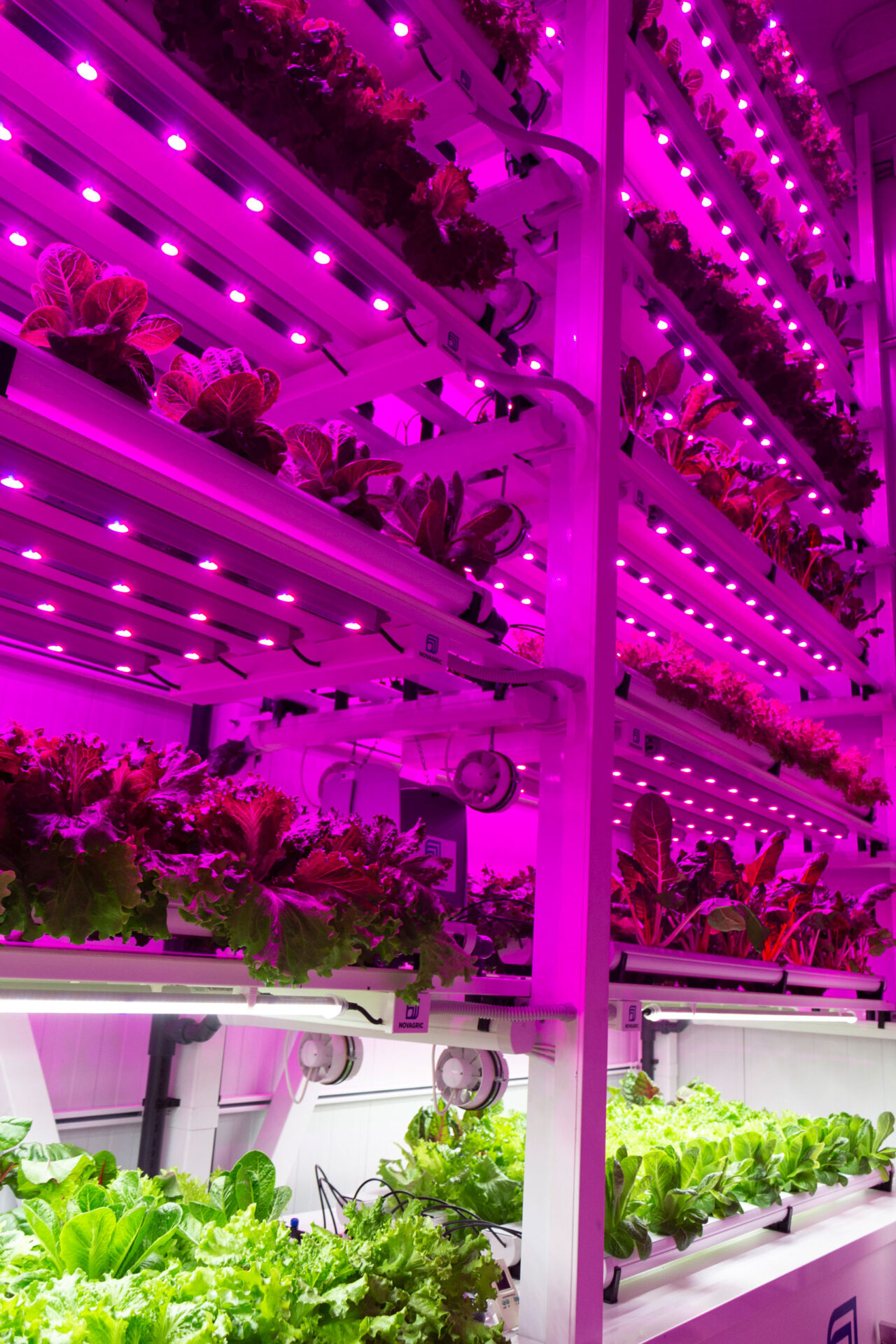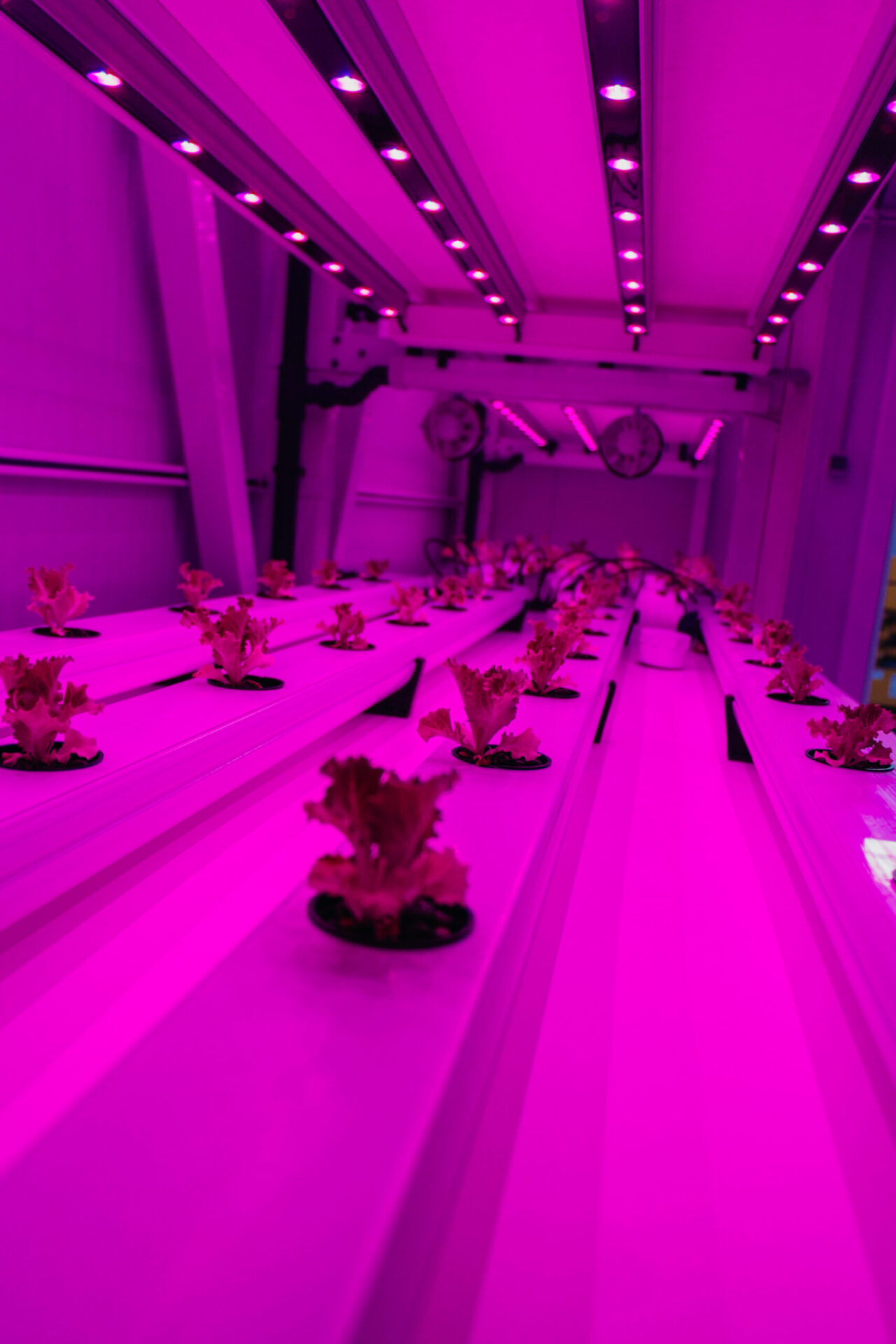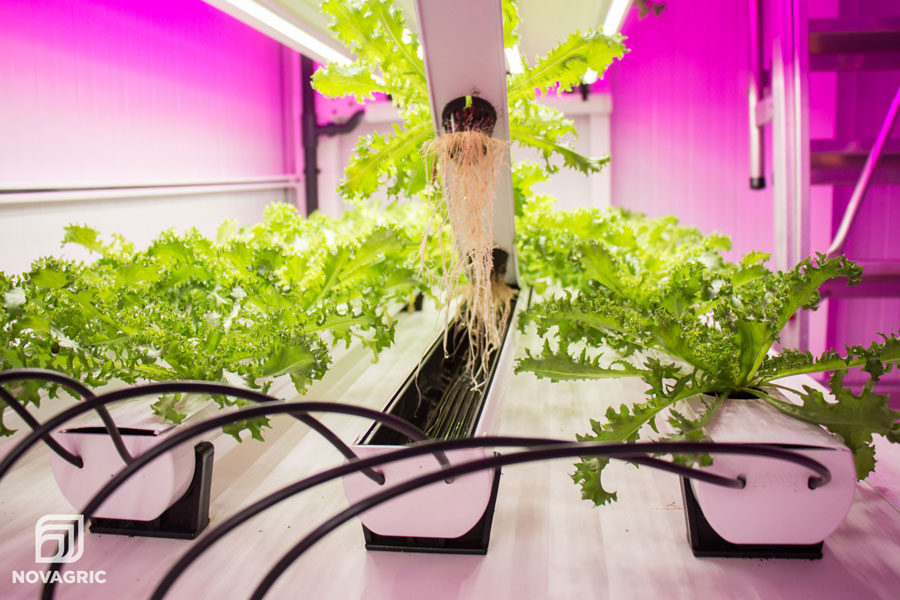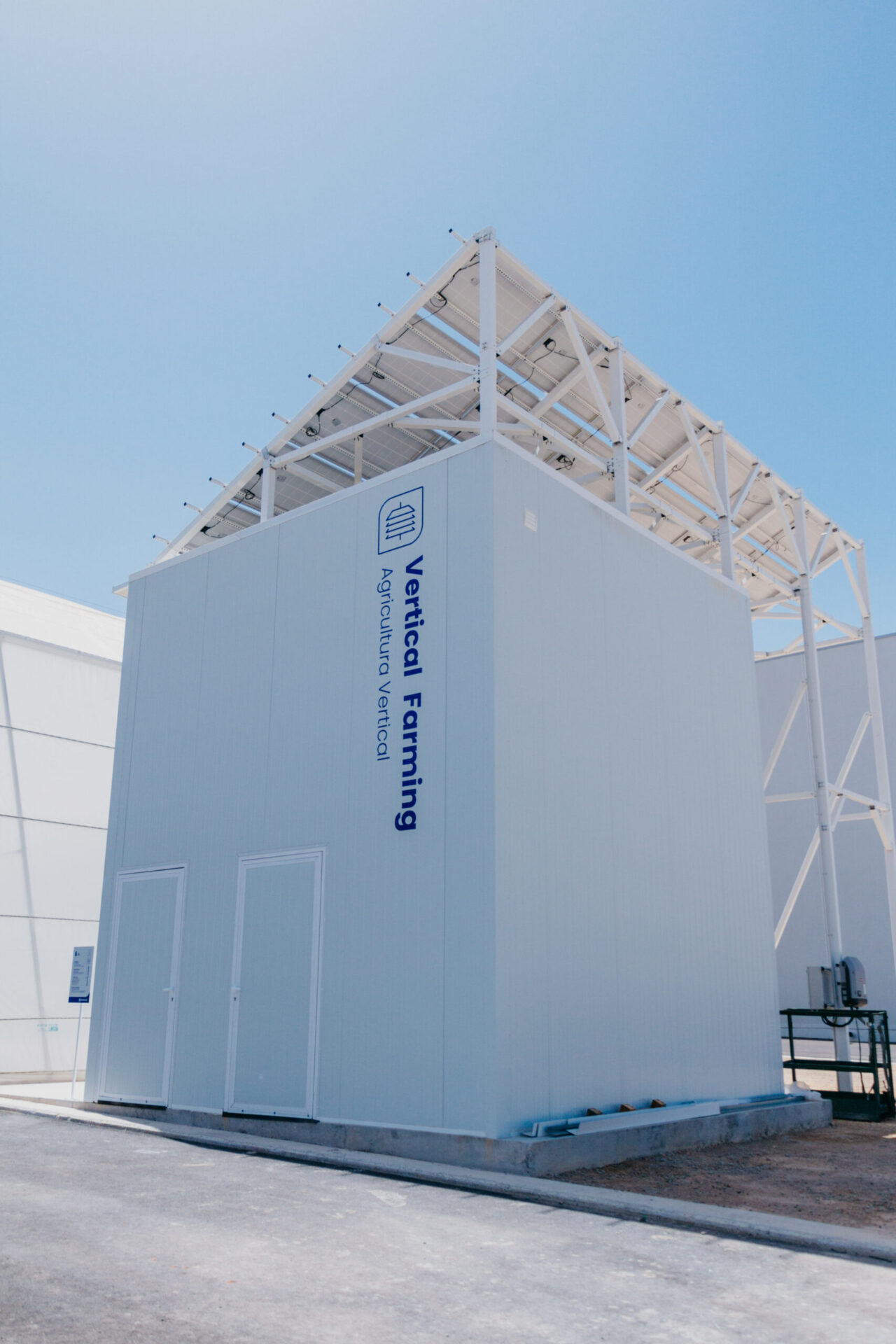What is vertical farming
Vertical farming is a new way of indoor and high altitude production thanks to technologies that allow the control and management of indoor crops.
This growing method has huge potential to address these new challenges. And it answers many questions that customers have about the provenance, sustainability, and health of the food they eat.
Challenges facing agriculture
Therefore, your farm must be competitive and make the most of resources. And thus feed the population in a sustainable way by increasing your crops productivity.
Advantages of Vertical Farming
Vertical Farming modules
The structure is designed and manufactured by Novagric in galvanized steel (lacquered in white) and combined with a sandwich panel enclosure.
The layout makes the most of the space and allows tightness and controlled air exchange.

Air conditioning
Indoor plants have very precise climatic requirements. And the modules are equipped with everything necessary to maintain optimal growing conditions (cooling, heating, relative humidity control, air, temperature, and humidity). A system that can be configured manually, semi-automatically or automatically to continuously monitor crop variables and program responses.

LED lighting
LED lights configured to provide the plant growth ideal light amount and reduce consumption.

Irrigation
Substrate-free irrigation is used in independent modules with different levels and NFT gutters that make the most of the number of plants in each level and linear extension. The system (manual, semi or automatic) consists of tank, pump, filter, and recirculating network.
Take the leap to vertical agriculture
Contact us to start growing vertically and achieve a stable production all year round.
The great customization degree allows to establish any climatic conditions. Vertical agriculture is an effective alternative to feed the world’s growing population. The crops grow in a controlled environment suitable for each species. And the productions are predictable and consistent throughout the year, with fresh and pesticide-free products.



